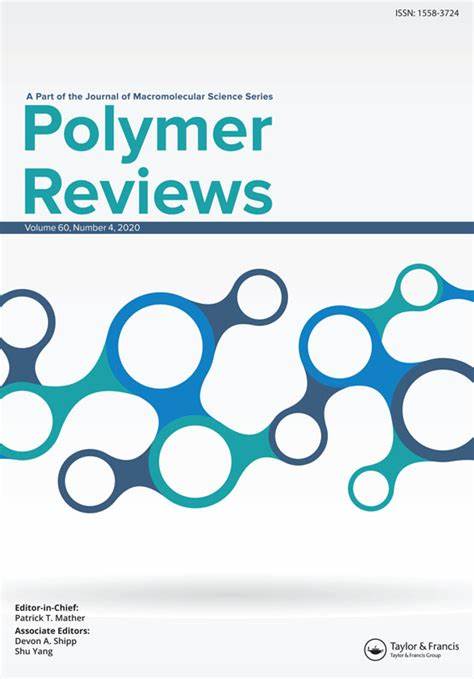反应挤出阻燃高分子材料的研究现状与展望
IF 11.1
2区 化学
Q1 POLYMER SCIENCE
引用次数: 8
摘要
阻燃高分子材料的发展有两个根源,一个是材料设计,另一个是材料加工。近几十年来,不同类型和类别的阻燃聚合物材料已经商业化,以满足建筑、汽车和涂料行业的安全要求。在绝大多数情况下,设计和制造具有低火灾危险的新材料可以通过将一种,两种或多种具有相似或不同性质的阻燃剂掺入聚合物中来获得。然而,这些新相的存在,通常在高负荷水平下使用,通常会影响聚合物的其他功能特性,如机械、老化和透明度。这些限制可以部分或完全克服使用反应挤出,这是一个有前途的过程,开发新的聚合物或修改现有的化学结构。除其他可能性外,反应挤出可用于增强现有聚合物的防火性能或用于合成具有固有阻燃性能的新聚合物。近年来,人们利用反应挤出技术开发了几种新型阻燃聚合物,但对其技术条件、性能和商业潜力尚未进行系统的描述。这篇简短的综述试图对通过反应挤出工艺开发阻燃聚合物材料的现有报告进行概述和分类。本文章由计算机程序翻译,如有差异,请以英文原文为准。
Flame-Retardant Polymer Materials Developed by Reactive Extrusion: Present Status and Future Perspectives
Abstract The development of flame retardant polymer materials has two roots, one in materials design, and the other in materials processing. Over recent decades, different types and classes of flame retardant polymer materials have been commercialized to meet safety requirements in the construction, automotive, and coatings industries. In the vast majority of cases, the design and fabrication of new materials presenting low fire hazards could be obtained through the incorporation of one, two or more flame retardants with similar or different natures into polymers. Nevertheless, the presence of these new phases, often used at high loading levels, usually impact the polymer’s other functional properties, such as mechanical, aging and transparency. These limitations could be partially or totally overcome using reactive extrusion, which is a promising process for developing new polymers or modifying the chemical structure of existing ones. Amongst other possibilities, reactive extrusion can be used for enhancing the fire behavior of existing polymers or for the synthesis of new ones presenting inherent flame retardant properties. In recent years, several new flame retardant polymers have been developed by reactive extrusion, but these developments have not been systematically described with regard to their technical circumstances, properties, and commercial potential. This short review attempts to overview and classify the available reports on the development of flame-retardant polymeric materials through reactive extrusion processes.
求助全文
通过发布文献求助,成功后即可免费获取论文全文。
去求助
来源期刊

Polymer Reviews
工程技术-高分子科学
CiteScore
24.80
自引率
0.80%
发文量
21
审稿时长
6 months
期刊介绍:
Polymer Reviews is a reputable publication that focuses on timely issues within the field of macromolecular science and engineering. The journal features high-quality reviews that have been specifically curated by experts in the field. Topics of particular importance include biomedical applications, organic electronics and photonics, nanostructures, micro- and nano-fabrication, biological molecules (such as DNA, proteins, and carbohydrates), polymers for renewable energy and environmental applications, and interdisciplinary intersections involving polymers.
The articles in Polymer Reviews fall into two main categories. Some articles offer comprehensive and expansive overviews of a particular subject, while others zero in on the author's own research and situate it within the broader scientific landscape. In both types of articles, the aim is to provide readers with valuable insights and advancements in the field of macromolecular science and engineering.
 求助内容:
求助内容: 应助结果提醒方式:
应助结果提醒方式:


